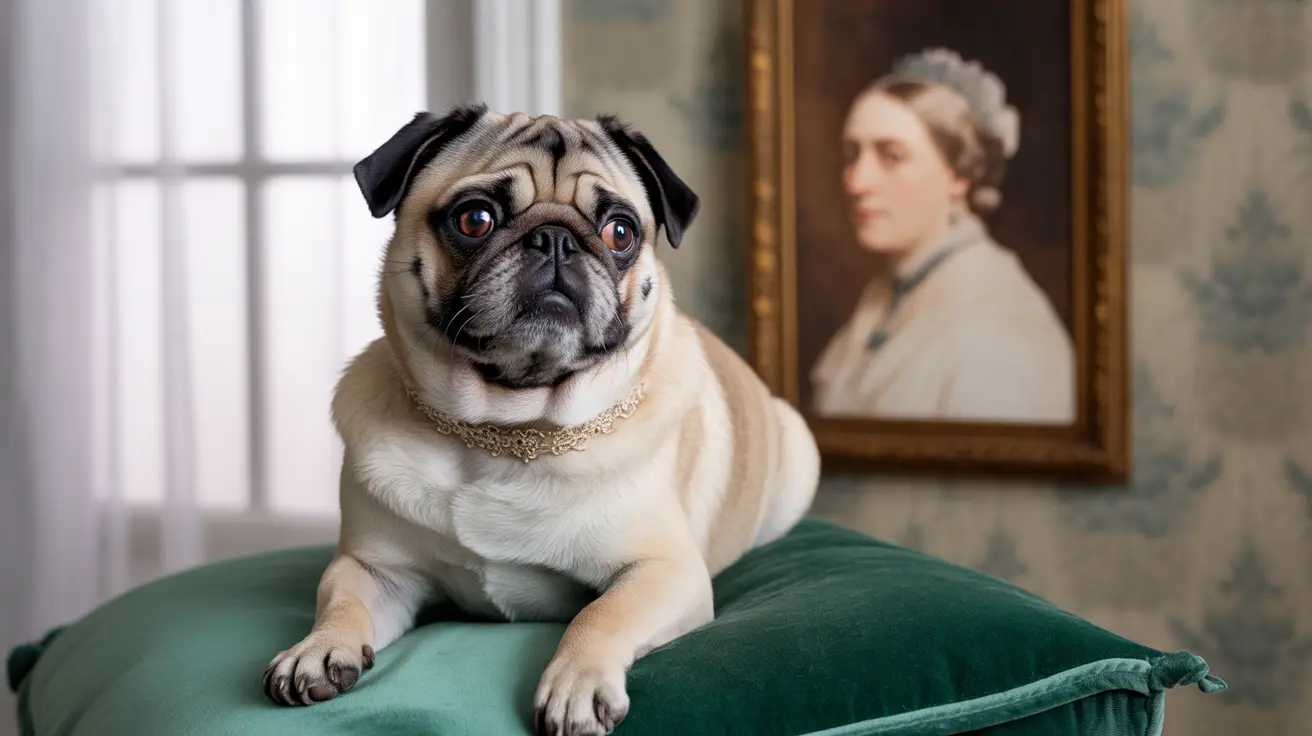The 1800s marked a golden age for pugs, transforming them from exotic Eastern imports into beloved companions of European nobility and society figures. This fascinating period shaped not only the pug's physical appearance but also cemented their status as one of history's most cherished companion breeds.
From Queen Victoria's passionate advocacy to their evolution through selective breeding, the story of pugs in the 1800s reflects the changing social landscape of Victorian Europe and provides fascinating insights into the development of modern dog breeding.
The Royal Connection: Queen Victoria's Influence
Queen Victoria's deep affection for pugs played a pivotal role in establishing their popularity during the 19th century. With approximately 36 pugs in her royal kennels throughout her lifetime, she set trends that resonated throughout British society and beyond. Her advocacy extended beyond mere ownership – she implemented significant reforms in dog breeding practices, including banning cruel practices like ear-cropping and tail-docking in royal kennels.
Physical Evolution Throughout the Century
The pugs of the early 1800s looked notably different from their modern descendants. These earlier pugs featured longer legs, less pronounced facial features, and single-curled tails. Their faces were less extremely flat, and their eyes were smaller and less protruding than what we see today.
Two major breeding lines emerged in Britain during this period: the Morrison line, known for yellow fawn coloring and a more compact build, and the Willoughby line, characterized by stone fawn coloring and longer facial features.
The Chinese Influence and Black Pugs
A significant turning point came after 1860, following the Opium Wars, when new pug varieties arrived from China. These "Happa" pugs introduced darker colorations and influenced the breed's appearance. Notably, Baroness Anna Brassey popularized black pugs in England after acquiring one during her travels to China, adding a new dimension to pug breeding and popularity.
Social Status and Symbolism
Pugs became powerful symbols of social status in Victorian society. Their presence in aristocratic portraits and artwork by renowned artists like William Hogarth and Francisco Goya reflected their association with refinement and luxury. The breed's small size made them particularly suitable for urban living, adding to their appeal among the growing middle and upper classes.
Breed Recognition and Standards
The American Kennel Club's formal recognition of pugs in 1885 marked a crucial milestone in the breed's history. This official acknowledgment led to the establishment of breed standards and the foundation of the Pug Dog Club of America, helping to preserve and promote the breed's distinctive characteristics.
Frequently Asked Questions
How did pugs first arrive in Europe and become popular in the 1800s?
Pugs initially arrived in Europe through Dutch East India Company traders in the 16th century, but their popularity soared in the 1800s due to royal patronage and increased trade with China.
What role did Queen Victoria play in the popularity of pugs during the 19th century?
Queen Victoria owned approximately 36 pugs and championed their welfare, banning practices like ear-cropping. Her influence made pugs highly fashionable among British society.
How did the appearance of pugs change throughout the 1800s?
Early 1800s pugs had longer legs, less flat faces, and single-curled tails. Through selective breeding, they developed shorter muzzles, more prominent eyes, and double-curled tails by the century's end.
Why were black pugs introduced to England in the late 1800s, and who popularized them?
Black pugs were introduced to England through increased trade with China after the 1860s. Baroness Anna Brassey popularized them after acquiring one during her travels to China.
When were pugs officially recognized as a breed by the American Kennel Club, and what impact did that have?
The AKC officially recognized pugs in 1885, leading to standardized breed characteristics and the establishment of the Pug Dog Club of America, which helped maintain breed standards.
Today's pugs may look different from their 1800s ancestors, but their enduring popularity and cherished status as companion dogs remain unchanged, testament to the lasting impact of their Victorian-era golden age.






